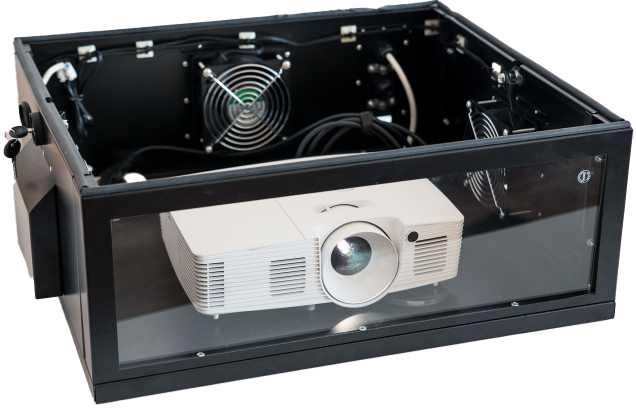
Cables, cables, cables everywhere! All snaked together in a frustrating, hair-pulling clump; kinked into impossible knots; jacks and female ends bent and dinged up on the floor. This is not the way your cables should be - not unless you want to be constantly buying replacement cables. But, unfortunately, this is the way our cables often end up, all due to improper coiling. If that's your bag, more power to you. But, for the rest of us, the proper coiling of your AV cables are the key to their longevity and optimum performance levels when it comes time for an outdoor cinema event. In this post we'll go over a few great methods that you can use to coil your cables and keep them coiled.
The Alternating Wrap
The alternating wrap method is a great way to avoid kinks and knots in your cables. Hold the end of the cable in your left hand. With your right hand, make a single overhand loop. The first one will be easy, but next comes the tricky part. Hold the back of your right hand against your chest, so that your thumb is pointing downward. Keeping your hand in this position, grab another length of cable. Now, simply twist your right hand back into its normal position as your bring it toward your left hand. It should make a loop, just like that first easy one. Now, alternate between the two methods until the cable is all wrapped up. This method ensures that the natural contours of the cable's guts are not compromised or bent in the wrong direction.
The Shortening Method
The shortening method is great when you have a long cable and you don't always know how much of it you're going to need. For this style of wrap, make a simple loop. Then, loop the next part through the middle and around the cable. As you repeat the steps, the cable's coil should have a braided appearance. The nice thing about the braided coil is that it allows you to uncoil only the length you need without having to unwrap the entire cable and have excess length lying around.
The Quick Shortening Method
The quick shortening method is actually a combination of the normal alternating wrap and the shortening method. If you have a long cable and you're in a hurry to strike your equipment and get home, you can do the alternating wrap and then switch to the shortening method towards the end. It won't have the same effect as the shortening wrap, in that it won't shorten your cable in the same way. It will, however, provide a secure coil when you don't have a lot of time.
The Overhead Knot
The overhead knot is more of a last resort method of wrapping - the kind you would use when those menacing black clouds start drizzling all over your expensive electronic projection equipment. Do a simple back-and-forth kind of wrap until the cable is short enough, and then take the two ends and tie a simple knot up top around the coil. This is not a good method to use regularly, as it will cause kinks in your cables overtime. But, it's a good move when you're in a pinch.
The Binder Clip Method
If you're stretched for time and you have a binder clip, you can do a wrap just like you would to make the overhead knot - except at the end you don't make the knot. You secure the loose ends of the cable with a binder clip. Always use a binder clip in lieu of tying a knot, if you can. Doing so will at least ensure that there is one less potential kink in your cable.
Keep Them Coiled
Of course it's easy to wrap a cable - but keeping it wrapped without securing the loose ends in some way is a fool's errand. If the coil is not secure it's only a matter of time before they come undone and you've got a gear bag that resembles a snake pit. Find a way to secure your cables that works for you - and make sure it's easy to undo, too. Some people like zip ties. Some people like tape. Others like little strips of velcro that hang from their cable ends. Any method is good, as long as it keeps your outdoor cinema events running smoothly and doesn't deteriorate your cables.






